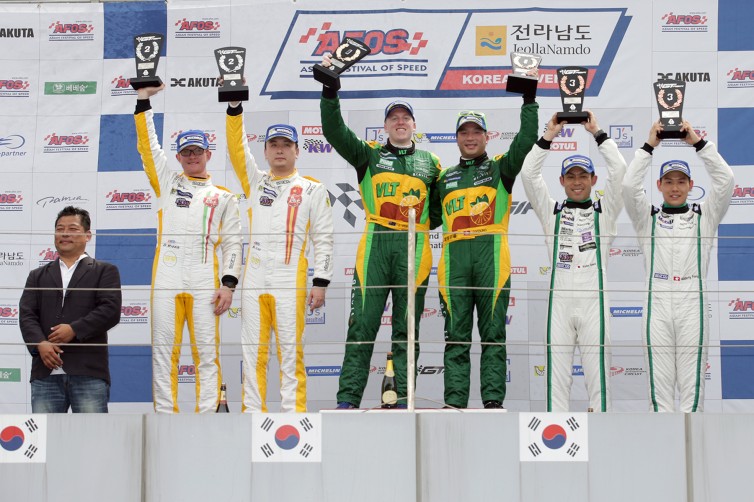
One of the great successes of the GT Asia Series as a racing category, has been the terrific mix of both professional and amateur driver combinations who have competed in – and won – over the six year history of the category, but in season 2015, there was a shift in the established dynamic, with the emergence of silver-silver driving combinations.
Internationally, drivers are graded on their experience. In GT Asia, there are four levels for drivers in the 2016 championship; Platinum – for professional drivers who compete at the highest level, then Gold, Silver and down to Bronze – the classification for Amateur (often referred to as ‘gentleman’) drivers.
Last year it was silver-silver driving combinations who dominated the championship, with a silver driver classified as a driver who competes regularly, but not at a professional level.
Season 2015 saw the title waged between former Macau winner – Craft-Bamboo Racing’s Darryl O’Young and team-mates Jonathan Venter and Daniel Lloyd, Absolute Team Bentley’s Keita Sawa and Adderly Fong, and BBT Ferrari combination Anthony Liu and Davide Rizzo, those teams sharing first through fifth in the driver’s championship.
“It was clear last year that some of the teams elected to take the silver-silver driver combination as a strategic move to claim the championship,” Motorsport Asia Limited CEO David Sonenscher explained.
“Some of the silver drivers are less than a second a lap slower than the ‘Pro’ drivers, whereas the ‘Am’ drivers can be as much as three to five seconds a lap slower, so the silver-silver combinations across a full race distance were usually the standout combinations, so in season 2016, we’re going to start with an additional 12-second driver parity pit-stop penalty for those combinations.”
One of the new additions to the 2015 championship was the addition of monitored data-logging, a system Motorsport Asia used to great effect to modify where needed, with the Balance of Performance for some of the new cars into the championship after it became clear that wildly varying ambient conditions had a greater effect in Asia on some cars than others. Those conditions ultimately gave differing results than were being observed in other GT3 championships being held in other parts of the world.
“Using that data, we’ve been working hard over the off-season to determine what the best parity penalty would be for the silver-silver combinations, and 12-seconds is the current determination,” Sonenscher explained.
“That said, we will adjust it if required once we see how it plays out in the actual races, with the aim of ensuring the closest possible competition through the year. I think one of the hallmarks of the GT Asia Series is just how close the competition is, and if you look at season 2015, of the 12 races, there were seven different winning combinations, so I think the system is working it as was always intended.”
In another change for the 2016 season, an official pre-season test will be undertaken at Korea International Circuit in South Korea in the days immediately ahead of the opening round of the championship – 9-10 May.
For 2016, all stops on the calendar have also become three-day official events, with Motorsport Asia dropping the unofficial practice sessions that had previously been offered on the Thursday of each round, with additional practice offered on every Friday ahead of qualifying.